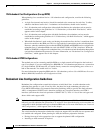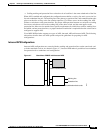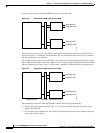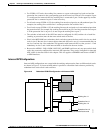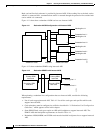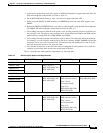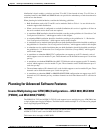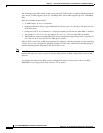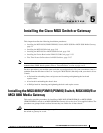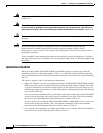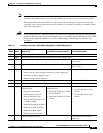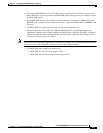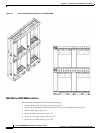
4-22
Cisco MGX 8800/8900 Series Hardware Installation Guide
Releases 2 - 5.2, Part Number OL-4545-01, Rev. H0, May 2006
Chapter 4 Planning for Card Redundancy, Line Redundancy, and Bulk Distribution
Planning for Advanced Software Features
The advantage of the IMA feature is that you do not need T3/E3 circuits to support high bandwidth on
your switch. T1 IMA supports up to 16 1.544-Mbps links, and E1 IMA supports up to 16 2.048-Mbps
links.
Here are some IMA characteristics:
• Is ATM Forum 1.0- and 1.1-compliant.
• Supports differential delays of up to 200 milliseconds (ms) across T1s and up to 250 ms across E1s
in an IMA group.
• Configures each T1 or E1 interface as a single port running at full line rate when IMA is disabled.
• Any group of n x T1s or n x E1s can support an n x T1 or n x E1 port when IMA is enabled.
• When enabled, can have multiple IMA ports of any configuration supported per card. (A specific T1
or E1 line can be in only one T1/E1 or IMA port at a time.)
When a T1/E1 circuit fails, an IMA port automatically adjusts to continue operation over the remaining
circuits. You can also configure the minimum number of T1/E1 links, which allows the IMA group to
continue operating when individual T1/E1 link failures occur.
Note To configure switches for IMA, the only hardware requirement is that all lines in a group must be set up
between the same two cards on a pair of switches. Beyond that, all IMA configuration is done in the
software.
To configure the software for IMA or other configurations in this section, refer to the Cisco MGX
8800/8900 Series Configuration Guide, Release 5.2 for details.



